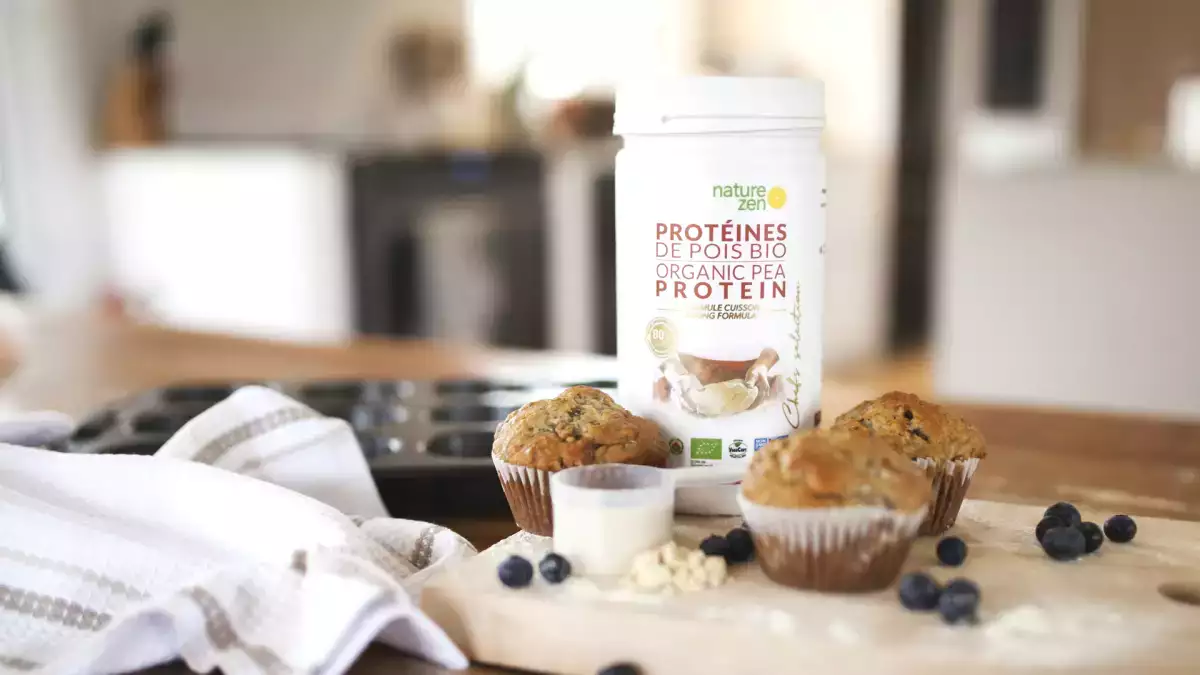How much protein does a food need to say it is "high in protein"?

How much protein does a food need to be "high in protein"? It's not decided by marketing, it's the law. Learn to read the labeling, avoid the halo effect and find out why not everything "protein" is healthy. Quality, context and composition do matter.
Who says what can be labeled as "proteinaceous"?
Nowadays, almost everything seems to have protein in it. Cookies, yogurts, cereals, ice cream, bread... You get the impression that if a food doesn't have a stamp that says "protein" on it, it's not trendy. But that (seemingly innocent) word doesn't always mean what you think it does. How much protein does a product really need to be "high in protein"? Who regulates that? And is it always a good sign?
The truth is, it's not decided by the fashion influencer, the advertiser, or even the brand. It's the law.
In Europe, nutrition claims on packaging, such as "high in protein", "low in sugar" or "source of fiber", are regulated by Regulation (EC) No. 1924/2006. This regulation establishes the objective criteria that foods must meet in order to include certain terms in their labeling.
Thanks to this legal framework, the use of terms such as "high in protein" or "source of protein" does not depend on the creativity of the marketing department, but on technical requirements that must be verifiably met.
What does "high protein" and "protein source" mean?
According to this regulation: A food may claim to be a "source of protein" when at least 12% of the total energy value of the product comes from protein.
To be considered "high in protein", the percentage must be at least 20%.
It is important to note that it is not simply a matter of how many grams of protein the product contains per 100 grams, but the percentage of energy that protein contributes to the total energy of the food.
An example for better understanding
Imagine a yogurt with the following characteristics:
- Provides 100 kcal per unit
- Contains 10 g of protein
- 4 kcal per gram of protein → 10 g = 40 kcal
40% of the product's total energy comes from protein. That means it more than meets the "high protein" criterion.
But if that same yogurt had only 3 g of protein (12 kcal), it would still be a protein food... but it could not be labeled as "high protein", and would only meet the minimum threshold for being a "protein source".
Beware of the "healthy halo" effect
It is common to find ultra-processed products that boast of being "rich in protein" but that, in reality, do not stand out for their overall nutritional profile. Cookies with poor quality fats, bars with added sugars or snacks with more additives than real ingredients. This phenomenon is known as the halo effect: a positive characteristic (in this case, "protein") makes the consumer perceive the whole product as healthy, even though it is not.
A single nutrient does not make a food a good choice. The value of a product is not measured by an isolated fact, but by its overall value: what ingredients it contains, how it is processed, what other nutrients it provides or unbalances.
More protein = healthier? Not necessarily
Proteins are essential: they are involved in the formation of tissues, enzymes, hormones, the immune system and help maintain muscle mass. But that does not mean that the more grams we consume, the better. In fact, there is a recommended daily amount: at a minimum, it is estimated at 0.8 grams of protein per kilogram of body weight per day, a figure that varies according to age, physical activity or state of health.
Moreover, not all protein has the same nutritional quality. Some sources have a better essential amino acid profile and greater digestibility. For example, egg or milk protein is more complete than many vegetables or proteins added to ultra-processed products. This difference, known as biological value, influences the actual utilization by the body.
Therefore, the quantity matters as much as the quality and the food context in which it is consumed.
What about unlabeled food?
Many of the foods that have traditionally been part of a balanced diet (such as eggs, legumes, nuts, fish or cheese) are excellent sources of protein, even if they do not carry a conspicuous label on the package.
In fact, in most cases, they do not need to be sold as "protein" because they already are. Knowing these products and their nutritional value helps to consume quality proteins without relying on commercial claims.
Rich in protein? Yes, but...
And the next time a package shouts "PROTEINS!" from the shelf, you'll know to look beyond the word. Because now you know that not all "protein-rich" products should be considered healthy by default and that you should read the labeling carefully. Do not be fooled by commercial claims; the presence of a nutrient of interest (such as protein) does not make a food healthy if the rest of the composition is poor or if it does not have a balanced nutritional profile.
 Patricia González
Patricia González
Comments